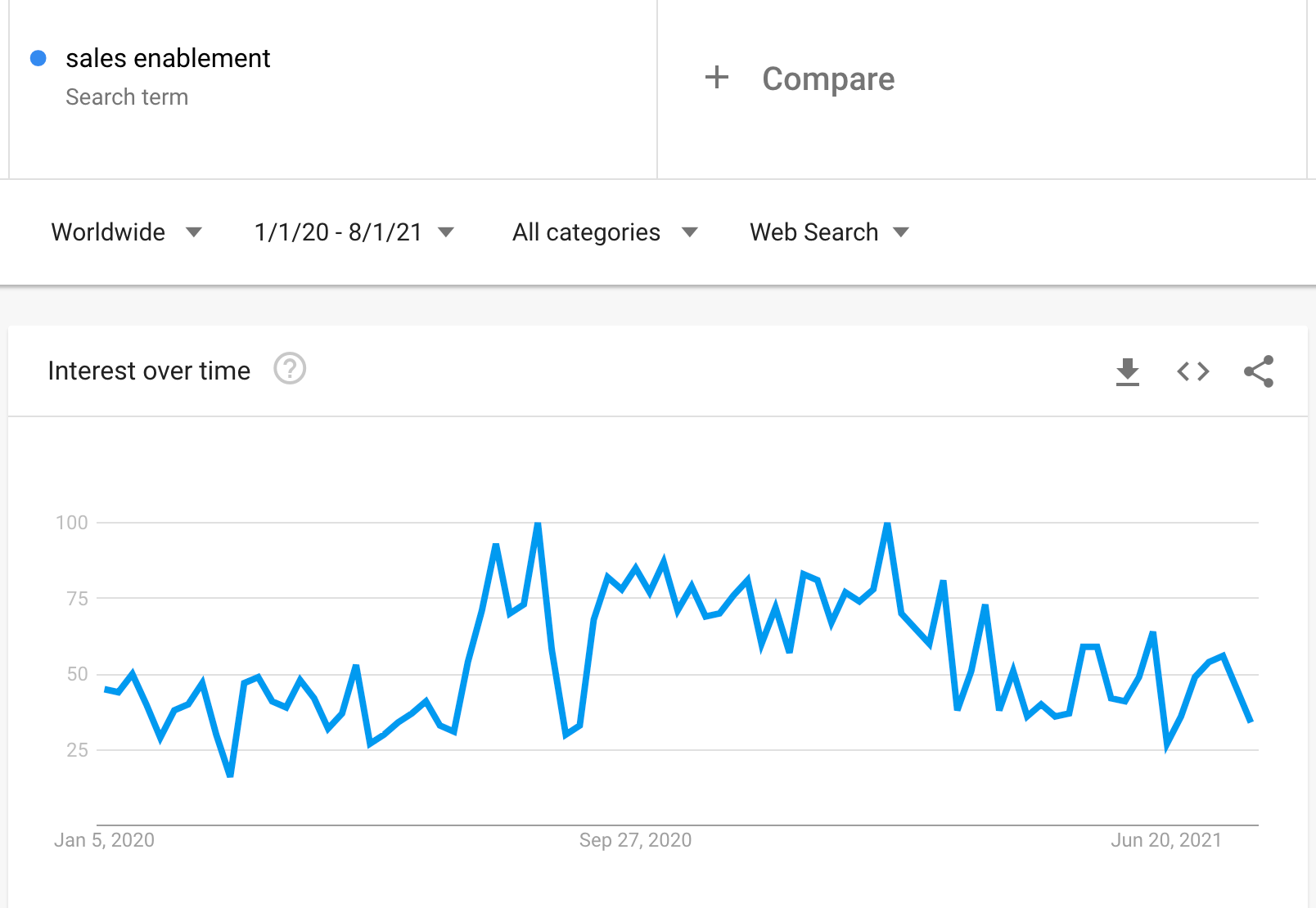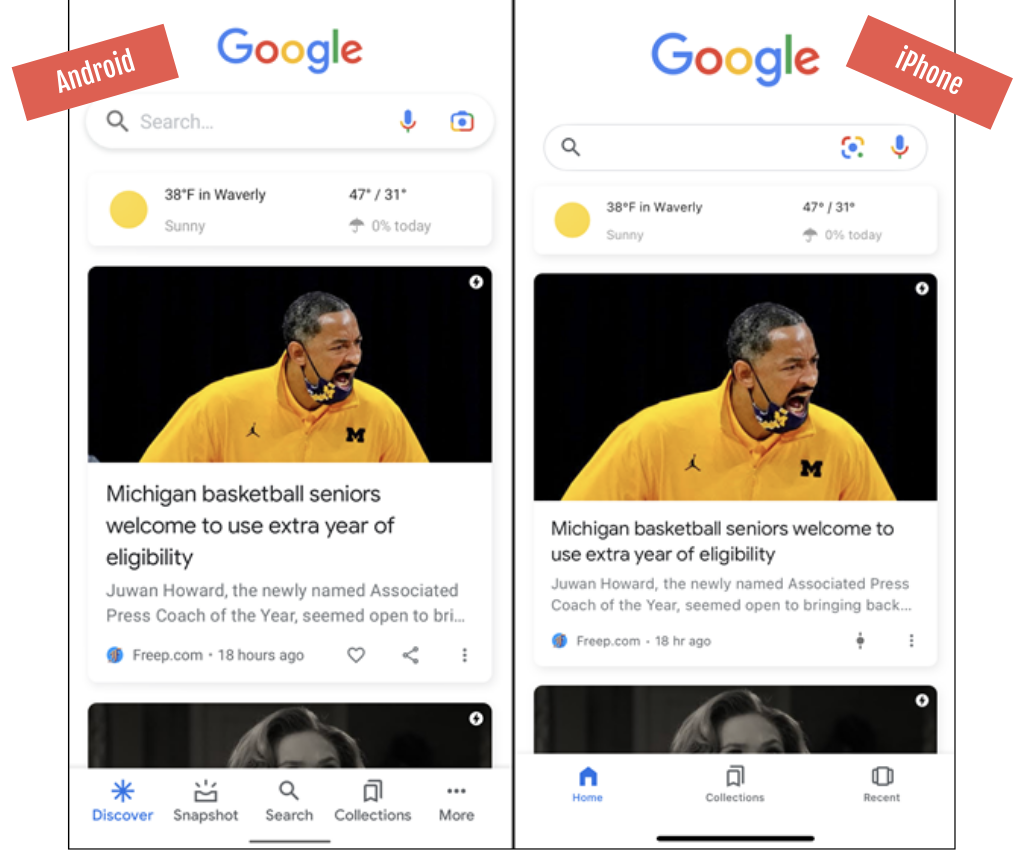Article's Content
Welcome to volume 45!
We see trends rise and fall all the time. But occasionally a trend rises and falls because it is not a trend at all…
By nature, trends are fleeting, they aren’t staples, and one recent software trend is on its way to becoming a remote working staple.
I’m talking about sales enablement platforms and the accompanying training tools required to educate teams on best practices. Two companies within the complementary niches (a Sales ABM Software solution + Learning Management Software solution) are joining forces to bring a seismic change to how remote teams manage marketing and sales.
Here’s a peek at what’s to come in this week’s round-up:
- Seismic reaches a $3B valuation and acquires Lessonly
- Steal the strategy behind Airtable and Shopify’s success
- 10 Google approved top-performing content features
- Moz releases an up to date latest Recommended List
Moz has released The Moz Recommended List consisting of trusted marketing consultants, firms & agencies. The list has become a go-to resource for any organization looking to find trusted SEO & content marketing talent. This list has helped countless companies find partnerships they can trust.
And this year, Foundation was named as one of Moz’s recommended content marketing & SEO agencies!
Thanks to Moz for putting out this helpful list — we are honoured to have been featured.
Seismic Seizes Lessonly as the Two Industries Take Off
This past Monday, August 16th, Seismic announced a $170M total raised in Series G funding. This announcement bumped up Seismic’s total amount of funding to $440M and a valuation of $3B.
So what is Seismic and why should you care?
Seismic is a marketing organization and sales enablement platform coming out of San Diego, California. It is the self-proclaimed #1 global sales enablement platform. The software company’s goal is to be a great tool for collecting, storing, sharing, and processing all materials across the marketing team, the sales team, and all integration applications online tools (Hubspot, Salesforce, Google Analytics) – it is the final piece to every tech stack.

During the summer of 2020, when we realized that remote work was here to stay, the interest in “search enablement” began to rise and stayed at peak levels until June 2021.

However, as you can see the trend peaked once again in June as the Delta variant delayed reopening. Laggards of the remote work trend are now requiring a solution to marketing and sales collaboration, and companies have seen how useful these tools really are.
Due to the peak in popularity and realization of the value sales enablement platforms have, the PPC competition has been on an incline as well.
Luckily for Seismic, they are able to gain organic traffic for two common search terms:

By not paying for search ads, Seismic is saving $9,350 a month and $112,200 a year, which may not seem like a huge amount of savings but it is when you compound that year over year. These savings are also reinvested into product improvements and acquisitions, such as the recent take over of Lessonly.
Lessonly is an Indianapolis software company focusing on training, enablement and coaching. In a Lessonly press release, Max Yoder and Conner Burt, have outlined two product goals under the Seismic partnership:
- Continue building Lessonly’s training, coaching, and knowledge products, so customer-facing teams can keep benefitting from Lessonly like they always have. This will be possible at an accelerated pace with the help of Seismic’s resources.
- Continue integrating Lessonly’s product suite with Seismic’s product suite. With the acquisition underway, this will be all the more seamless.
Let’s take it back for a second and look at Lessonly’s mission statement.
Train your team 62% more efficiently and effectively with Lessonly’s enablement software.
Where Seismic positions itself as a smarter sales enablement platform, Lessonly is positioned as an enablement software that focuses on training employees and tracking progress. “If you can write an email, you can build a lesson in Lessonly,” according to their product’s landing page.
For any company, it is important to keep pushing your team to level up so that the organization as a whole is able to perform at a higher level. With the Seismic Lessonly partnership, training your team is as easy as writing an email, and tracking growth is just another part of a well-oiled tech stack.
Tech stacks are becoming crucial in marketing and sales as data is collected and processed across multiple applications Having a tool to easily combine the insights is key, but those insights are easily misinterpreted or underutilized if there isn’t appropriate training in place.
Key Takeaways
- Marketing and sales teams are learning the importance of a strong tech stack.
- Sales enablement platforms are the best way to collect and interpret all of the incoming data from a company’s tech stack.
- Compiling data and having generated reports is going to be underutilized if appropriate training isn’t available to the team.
Steal Their Strategy: Airtable and Shopify
Last week, we discussed Airtable’s ability to attract 3M organic searches per year, and the growth to its $5.77B valuation. Now, this week, we have for you a downloadable guide to steal their strategy!
Within this document, you’ll gain access to a step-by-step checklist that outlines the way Airtable built up its keyword strategy to rank for 16.4K organic keywords and drive nearly 10k people to its site each month!
Want to Steal Airtable’s Strategy? Download this checklist!
By downloading this resource, you’ll also start receiving a few emails per week on B2B growth and content marketing
As I said, that was last week’s news, but we’ve got a new strategy for ya this week…
Shopify has used one tool to gain $6M in traffic!

*monthly data
Okay, it’s one tool with multiple iterations on multiple landing pages, but a simple business name generator that is easily duplicated has brought Shopify millions in traffic.
It isn’t an easy feat to rank for landing pages. Although landing pages are quick and easy to build, especially with a scalable template, they are often harder to rank for than a blog due to a limited ability to pack in keywords.
Want to Steal Shopify’s Strategy? Download this checklist!
By downloading this resource, you’ll also start receiving a few emails per week on B2B growth and content marketing
Shopify managed to overcome this difficulty and have their Business Name Generator tool—housed on various landing pages—rank for 18K keywords and drive about 400k sessions per month.
Want to know more about how they did it? Check out Ryan’s latest post in the lab: How Shopify Drives $6M Worth of Traffic With One Tool.
Enjoy stealing their strategies and we wish you the best of luck!.
Key Takeaways
- Long-tail keywords and subdirectories help boost the rankings of landing pages.
- Tools are a great way to drive traffic, especially when they have multiple use cases.
- Focusing on search intent is the best way to guide page creation and position these pages to best align with a user’s search query.
How To Get Discovered on Google Discover (10 Tips)
First off let’s go over what Google Discover is; it’s an automatically curated feed of content from Google that is personalized to you based on search behaviour.
It was once described as a feed of Google searches that have been completed for you.
To access Google Discover, you must download the app, log in, and there you have it, all set to start enjoying the content and finessing your own algorithm.

From a content marketing standpoint, this is a great way to get your content featured and have users organically “stumble upon” your brand. It is perfect for top-of-funnel content when your audience is in the problem-aware stage but are not yet able to name the problem or identify solutions. It’s similar to how we leverage social media to have our content seen without spending on ads.
Before we move into tips on how to get featured in Google Discover, I’d like to point out that “Google Discover” receives 37K global searches per month. There’s a good chance your audience is familiar with this platform and your competition is already looking for ways to be featured.
Seven (Relevant) Characteristics of Top-Performing Content on Google Discover.
Search Engine Journal studied 7,200 URLs to see what common characteristics occurred across the top-performing pieces of content on Google Discover.
We’ve compiled a list of the seven most relevant characteristics:
- Emotionally charged headlines.
- Evergreen topics tend to outperform relevancy.
- Using questions in the title – with the answer in the content.
- Content that performs well in search may not be the best in Discover (and vice versa).
- Listicles and featuring numbers in headlines perform much better on Google Discover than on a SERP from an SEO lens.
- Content featured on Discover can drive greater traffic as it targets passive scrollers, similar to social media, rather than targeted searches.
- Discover topics typically aligns with the user’s beliefs (as identified through search trends) meaning your content should be targeted to the right audience.
You should approach Google Discover in a similar fashion that you tackle social media, rather than focusing on SEO enhancements. This is all to say that you shouldn’t retire content pieces that aren’t excelling on Google search, rather shift your focus and try to optimize them for Google Discover.
Key Takeaways
- Approach Google Discover optimizations in a similar fashion as you would for social media.
- Content that appears on Google Discover is tailored to each user based on their search history.
- Google Discover is a rising area to target your audience when they aren’t actively searching for your solution.
OTHER NEWS OF THE WEEK:
💳Chime raised $750M in Series G funding, bringing their total valuation up from $15B in October 2020 to $25B.
🤖In its Series F funding round, Reddit is set to raise up to $700M which would place it at a $10B valuation.
📞Tiago Paiva, CEO of Talkdesk, has announced they’ve raised $230M in new Series D funding which has more than tripled the company’s valuation to $10B.
BRAIN FOOD OF THE WEEK:
Before we had TikTok as the leading six-letter app, Yik Yak reigned supreme! From 2013 to 2017, Yik Yak was the go-to, anonymous, community-based app—similar to Reddit, but the communities are segmented geographically rather than topically.
Just like Facebook, Yik Yak began on college campuses before it blew up in 2014 and reached a $400M valuation. Sadly, this bright star burned too quickly and fell off the app store in 2017.
In a funny turn of events, some of the original engineers were bought by Square — the payment service provider. But now, after a four-year hiatus, for better or worse, Yik Yak is back. For now, it is only on the US app store but there are plans to expand in place.
TWITTER THREAD OF THE WEEK:
12 easy ways to generate content ideas by Amanda Natividad
WHAT WE’RE WIRED INTO THIS WEEK 🎧:
Evergreen by Broods (Best Track: Never Gonna Change)
Originally sent out, by me Cali B, on Thursday, August 19, 2021.
Stay up to date with all of our latest findings by subscribing to our newsletter today. Signing up also gives you early access to Ross’ Tuesday essay full of exclusive industry insights.
Quick, do it now before the next drop!








